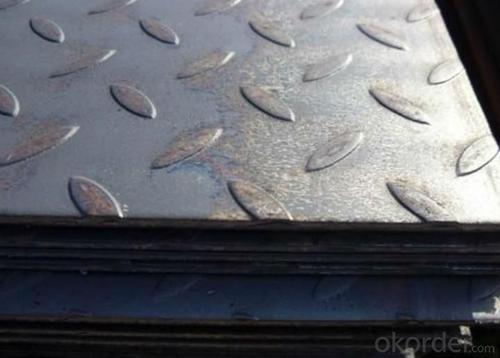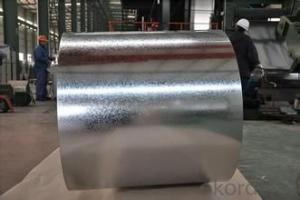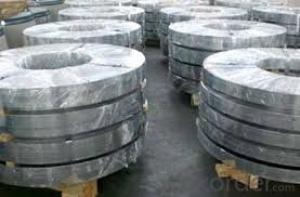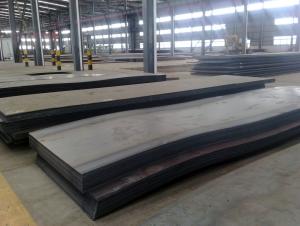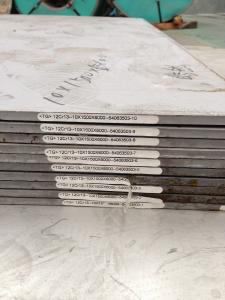Hot Rolled Dimond Sheet
- Loading Port:
- Xingang Port
- Payment Terms:
- TT or LC
- Min Order Qty:
- 100MT m.t.
- Supply Capability:
- 10000MT/Year m.t./month
OKorder Service Pledge
OKorder Financial Service
You Might Also Like
Specification of Hot Rolled Dimond Sheet:
1.Advantages of our Hot Rolled Dimond Sheet:
a) The unfairness of our dimond sheet must be less than 10mm each meter
b) The surface of our hot rolled dimond sheet is free from bubble, scab, crack, fold, edge delamination and so on.
2. Other details of Hot Rolled Dimond Sheet
Standard | EN10025 |
Grade | S275JR |
Thickness | 2.5-15mm |
Width | 1000mm 1220mm 1250mm 1500mm 2000mm 2500mm 3000mm |
Length | 4000-12000mm |
Note: Dimension of our hot rolled dimond sheet can be made according to your requirements, we can futher discuss about it.
3. The regular sections we provide are shown in the below table:
Base Thickness(MM) | Allowed Tolerance of Base Thickness(%) | Theoretical Mass (KG/M²) | ||
The Pattern | ||||
Rhombus | Beam | Pea | ||
2.5 | ±0.3 | 21.6 | 21.3 | 21.1 |
3.0 | ±0.3 | 25.6 | 24.4 | 24.3 |
3.5 | ±0.3 | 29.5 | 28.4 | 28.3 |
4.0 | ±0.4 | 33.4 | 32.4 | 32.3 |
4.5 | ±0.4 | 37.3 | 36.4 | 36.2 |
5.0 | 0.4~-0.5 | 42.3 | 40.5 | 40.2 |
5.5 | 0.4~-0.5 | 46.2 | 44.3 | 44.1 |
6.0 | 0.5~-0.6 | 50.1 | 48.4 | 48.1 |
7.0 | 0.6~-0.7 | 59.0 | 52.5 | 52.4 |
8.0 | 0.7~-0.8 | 66.8 | 56.4 | 56.2 |
4. Chemical Composition of Hot Rolled Dimond Sheet:
Standard | Grade | C(%)max | Mn(%)max | P | S |
EN10025 | S275JR | 0.25 | 1.6 | 0.045 | 0.045 |
Note: Here, we just take the hot rolled checkered steel sheet according to S275JR as example. We are also able to provide SGS test report for checkered steel sheet as per other material grade.
Applications of Hot Rolled Dimondl Sheet:
1.Definition: The hot rolled dimond sheet with raised pattern on surface. The raised pattern could be shaped as rhombus,bean or pea. There is not only one kind of pattern on the checkered steel sheet, but also a complex of two or more than two kinds of pattern on surface of one checkered sheet. It also could be called as grid steel sheet.
2.Character: The Hot Rolled Dimond Sheet possesses a variet of advantages, such as beauty in appearance,skip resistance and saving steel material.Generally speaking,in order to test the mechanical property or the quality of hot rolled checkered steel sheet, the shaping rate and the pattern height should be tested primarily.
3. In conclusion, the hot rolled dimond sheet can usually be used in the industry of ship-building,boiler,automobil,tractor,train- building and architecture. In details, there are many demands for hot rolled checkered steel plate to make floor,ladder at workshop,work frame pedal,ship deck,car floor and so on.
Package & Delivery of Hot Rolled Dimond Sheet:
1. The items to be prepared for packing include: narrow steel strip, crude steel belt or edge angle steel, kraft paper or galvanized sheet.
2. The hot rolled checkered steel plate should be wrapped with kraft paper or galvanized sheet ouside, and it should be bundled with narrow steel strip, three or two narrow steel strip in longitudinal direction,and the other three or two strips in transverse direction. Furthermore, in order to fix the hot rolled checkered steel plate and avoid the strip at edge shall be broken, the crude steel belt cut into square should be put under the narrow steel strip on the edge. Of course, the hot rolled checkered steel plate could be bundled without kraft paper or galvanized sheet. It depends on customer’s requirement.
3. In consideration of the transportaion from mill to loading port, the truck will be usually used. And the maximum quantity for each truck is 40mt.
4. In conclusion, we could do in accordance with customer's request.
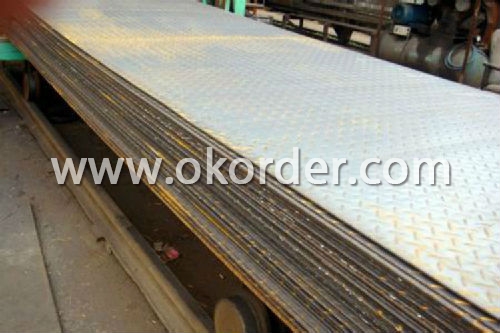

Production Flow of Hot Rolled Dimond Sheet:
1.The steel raw materials are first melted in an electric furnace. They are subjected to at least 12 hours of intense heat.
2.The mixture is cast into either large rectangular blooms, slabs or bar-like billets, before taking on a semisolid form.
This initial form of steel is then processed via forming operations that include hot rolling into bars, wires, plates and slabs.
3.The steel is subjected to annealing. This is a heat treatment in which the metal is first heated and then cooled under extreme, controlled conditions. The metal is thus treated for internal stresses and is duly softened and strengthened. This processing is also referred to as 'age hardening'. It requires careful monitoring of temperature and heating and cooling times. The aging temperature affects metal properties massively; while lower temperatures cause high strength and low fracture toughness (i.e., more brittle than ductile), higher temperatures result in a tougher material of lower strength (i.e., more ductile than brittle). Rapid cooling can produce a tough steel with no significant loss in strength. The heat treatment given to stainless steel depends on the type and grade of steel being produced.
4. Annealing or the heat treatment can lead to the development of a precipitate, known as scale. The scale can be removed via several methods, such as pickling, (nitric-hydrofluoric acid bath),electrocleaning(application of an electric current, using phosphoric acid and a cathode), etc.
5. Descaling of the material is introduced into the manufacturing process at different times, depending on the type of steel being produced. While the bar and wire forms have to be additionally treated with hot rolling,forging and extruding, the sheet and strip forms go through annealing after hot rolling.
6. Cutting operations in the manufacturing process are essential in obtaining the desired shape and size of the end product. Mechanical cutting involves the use of guillotine knives and high-speed steel blades for blanking (punching out the shape by shearing) and nibbling (cutting out a series of overlapping holes). It is also cut via flame cutting, a process that involves the use of a flame generated by oxygen, propane and iron powder. The plasma jet cutting method uses an ionized gas column to melt and cut the metal.
7. Manufacturing end products involve further shaping via heat-rolling, pressing, forging and extrusion. The material is then joined via welding and given the desired shape.
- Q: What are the different methods of cutting steel sheets?
- There are several different methods of cutting steel sheets, including shearing, plasma cutting, laser cutting, waterjet cutting, and abrasive cutting. Each method has its own advantages and disadvantages depending on factors such as the desired precision, speed, cost, and material thickness.
- Q: What are the load-bearing capacities of steel sheets?
- The load-bearing capacities of steel sheets can vary depending on factors such as the thickness, grade, and type of steel used. Generally, steel sheets can have high load-bearing capacities due to their inherent strength and durability. However, it is crucial to consult engineering specifications and professional advice to determine the precise load-bearing capacity for specific steel sheets in different applications.
- Q: What material can be replaced by 345D steel plate?
- Higher than its level of material of steel plate can replace.Q345D. yield in more than 345 of the steel.D class -20 degree of shock. Can replace the Q370D.Q390D.Q420D.Q460D.Q550D.Q690D., generally in engineering machinery can be higher generation low
- Q: Can steel sheets be painted or powder-coated after installation?
- Yes, steel sheets can be painted or powder-coated after installation. This allows for customization and protection against corrosion or other environmental factors.
- Q: Can steel sheets be used in the food processing industry?
- Yes, steel sheets can be used in the food processing industry. Steel is a popular choice for food processing equipment and materials due to its strength, durability, and corrosion resistance. It is commonly used in the construction of food storage tanks, conveyor belts, cutting surfaces, and other machinery. Additionally, steel sheets can be easily cleaned and sanitized, making them suitable for maintaining high hygiene standards in food processing facilities.
- Q: How do steel sheets perform in terms of sound absorption?
- Steel sheets are not effective in terms of sound absorption as they tend to reflect sound rather than absorb it.
- Q: What is a water stop steel plate?
- The joint position is called the new and old concrete construction joints, the waterproof concrete belongs to the weak links, increase the sealing plate, the water along the slit Jiecha position of the new and old concrete permeability met when the sealing plate can not leaking, sealing steel plays a role to cut off the water penetration path. In time, the steel plate is penetrated along the gap between the water stopping steel plate and the concrete, and the water stopping steel plate has a certain width, and the seepage path of the water is prolonged, and the utility model can also play a waterproof role.
- Q: What are the potential drawbacks of using steel sheets?
- There are several potential drawbacks of using steel sheets in various applications. Firstly, steel sheets are prone to corrosion. If not properly protected or coated, steel sheets can rust when exposed to moisture or certain environmental conditions. This can significantly affect their structural integrity and lifespan. Secondly, steel sheets can be heavy and difficult to handle. This can pose challenges during transportation, installation, and maintenance. The weight of steel sheets may also limit their use in certain applications where weight restrictions are in place. Additionally, steel sheets can be expensive compared to other materials. The cost of steel production, processing, and customization can be higher than alternative materials, making steel sheets less financially viable in some projects. Another potential drawback of steel sheets is their limited design flexibility. Steel sheets are often manufactured in standard sizes and shapes, which may not always meet specific design requirements. Modifying steel sheets can be time-consuming and costly, limiting their adaptability for unique or complex projects. Moreover, steel sheets have a relatively high thermal conductivity. This means that they can transfer heat quickly, making them less effective in providing insulation. In applications where thermal insulation is crucial, alternative materials may be more suitable. Lastly, steel sheets are not environmentally friendly. The production of steel involves significant energy consumption and carbon emissions. Additionally, the extraction and mining of raw materials used in steel production can have detrimental effects on the environment. Overall, while steel sheets have numerous advantages such as strength and durability, it is important to consider these potential drawbacks when choosing the appropriate material for a specific application.
- Q: Are steel sheets suitable for roofing?
- Indeed, steel sheets make an ideal roofing material. Steel, being both sturdy and durable, can endure even the harshest weather conditions, including heavy rainfall, snow, and strong winds. Moreover, it boasts fire resistance, pest resistance, and rot resistance, making it a trustworthy option for long-lasting roofing solutions. In addition to these advantages, steel sheets are lightweight and simple to install, leading to reduced labor and installation expenses. Furthermore, they are available in a wide range of colors and finishes, enabling customization to suit the aesthetic of any structure. All in all, steel sheets offer exceptional protection and durability, which explains their popularity in roofing applications.
- Q: Are steel sheets suitable for chemical storage tanks?
- Yes, steel sheets are suitable for chemical storage tanks. Steel is a highly durable and strong material that can withstand the corrosive nature of many chemicals. Additionally, steel sheets can be coated with protective layers or linings to further enhance their resistance to chemicals, making them a reliable choice for chemical storage tanks.
1. Manufacturer Overview
| Location | Tianjin, China |
| Year Established | 2004 |
| Annual Output Value | Above US$ 500 Million |
| Main Markets | China; Europe; America; Southeast Asia |
| Company Certifications | ISO9001、ISO14001、OHSAS18001 |
2. Manufacturer Certificates
| a) Certification Name | |
| Range | |
| Reference | |
| Validity Period |
3. Manufacturer Capability
| a) Trade Capacity | |
| Nearest Port | Tianjin; Qingdao; Dalian |
| Export Percentage | 41% - 50% |
| No.of Employees in Trade Department | 21-50 People |
| Language Spoken: | English; Chinese |
| b) Factory Information | |
| Factory Size: | Above 900,000 square meters |
| No. of Production Lines | 3 |
| Contract Manufacturing | OEM Service Offered |
| Product Price Range | High; Average |
Send your message to us
Hot Rolled Dimond Sheet
- Loading Port:
- Xingang Port
- Payment Terms:
- TT or LC
- Min Order Qty:
- 100MT m.t.
- Supply Capability:
- 10000MT/Year m.t./month
OKorder Service Pledge
OKorder Financial Service
Similar products
Hot products
Hot Searches
Related keywords



